Systellaspis cristata (Faxon, 1893)Common name(s): Krygier's spinytail |
|
| Synonyms:Acanthephyra cristata | 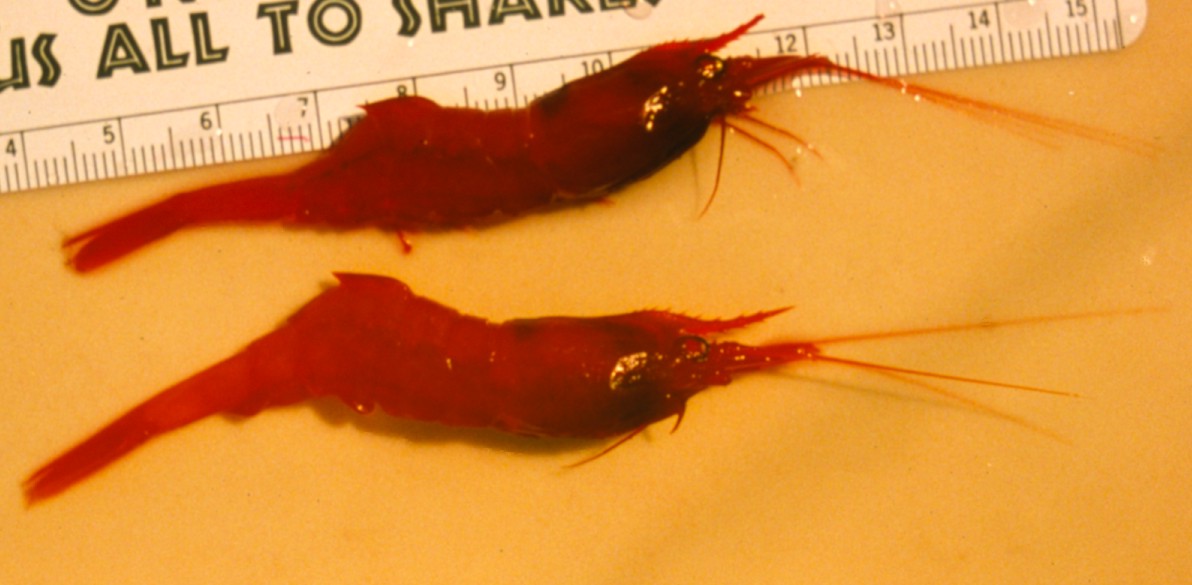 |
| Phylum Arthropoda
Subphylum Crustacea Class Malacostraca Subclass Eumalacostraca Superorder Eucarida Order Decapoda Suborder Pleocyemata Infraorder Caridea (true shrimp) Family Oplophoridae |
|
| Systellaspis cristata, caught off Point Conception, CA at 600-750 m depth. | |
| (Photo by: Dave Cowles, Sept 1995) | |
How to Distinguish from Similar Species: S. braueri has a shorter, triangular rostrum (no more than half as long as the carapace) with the distal third free of spines. S. debilis, which lives further south, does have a long rostrum but does not have the sinuous lateral or ventral carina on the carapace. Its 6th abdominal segment is also only about 1 2/3 as long as the 5th and it has dorsolateral rows of not more than 10 spines on the telson.
Geographical Range: Vancouver Island to Gulf of Panama, Bay of Biscay to Angola in the Atlantic Ocean, Indian Ocean. Type specimen was captured near Panama.
Depth Range: 600-2500 m
Habitat: Bathypelagic
Biology/Natural History:
This bathypelagic
species is not very common. Only 2 individuals have been
recorded
captured off British Columbia (Butler, 1980). Atlantic
individuals
carry large reddish-orange eggs.
| Return to: | |||
| Main Page | Alphabetic Index | Systematic Index | Glossary |
References:
Dichotomous Keys:Chace, 1986
Kozloff 1987, 1996
Wicksten, 2009
General References:
Butler TH (1980) Shrimps of the Pacific Coast of Canada. The
Canadian
Bulletin of Fisheries and Aquatic Sciences 202: 1–280
Chace,
Fenner A., 1986. The caridean shrimps (Crustacea:
Decapoda) of
the Albatross Philippine expedition, 1907-1910, Part 4: Families
Oplophoridae
and Nematocarcinidae. Smithsonian Contributions to Zoology
432
Scientific Articles:
Web sites:
General Notes and Observations: Locations, abundances, unusual behaviors:
The photographs below are of an individual we captured at 800 m depth Northwest of Oahu, Hawaii on New Horizon cruise NH96-2 trawl 87. Photographs of a formalin-preserved specimen taken by Dave Cowles, January 2013. Note that when preserved the animals lose almost all their dark red pigment.

Whole individual. Carapace
length 1.9 cm. Notice how the 6th abdominal
segment is twice as long or more than the 5th abdominal
segment, and that it does not have a dorsal carina.
Also note that abdominal
segments 3, 4, and 5 have a posteromesial
spine.
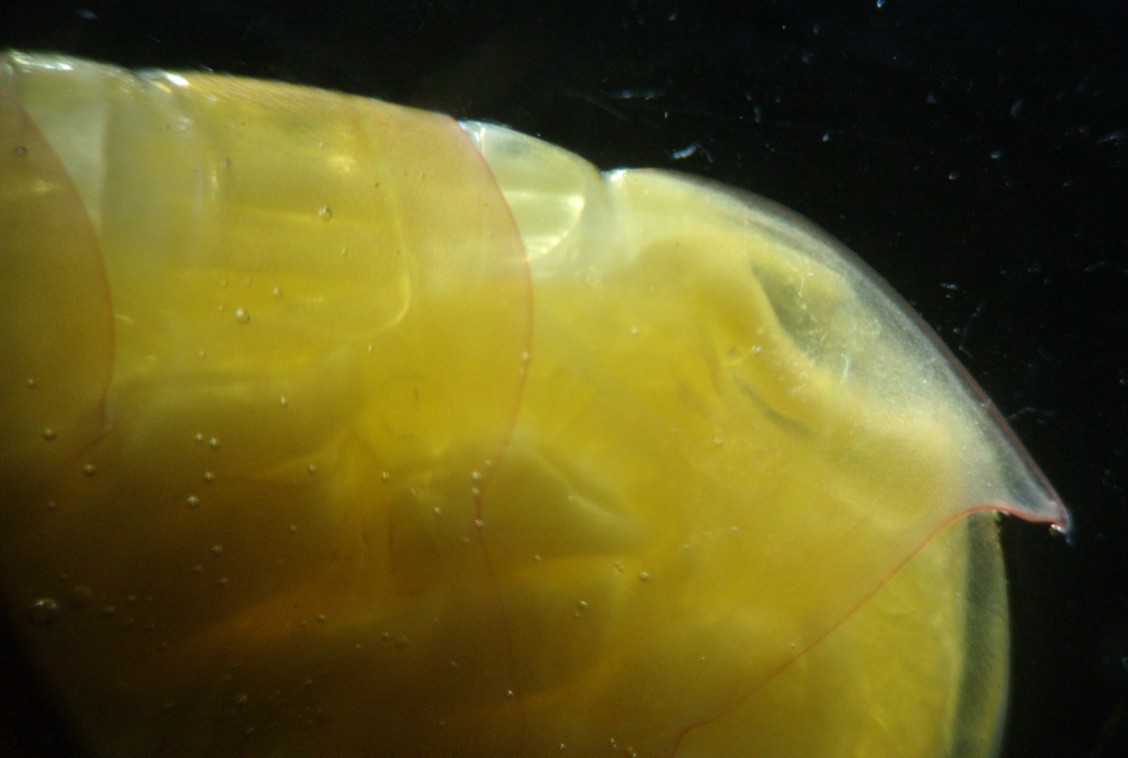
Lateral view of abdominal
segments 2-3. Segment 2 has no dorsal carina
nor posteromesial
spine, while segment 3 has both a carina
and a spine.
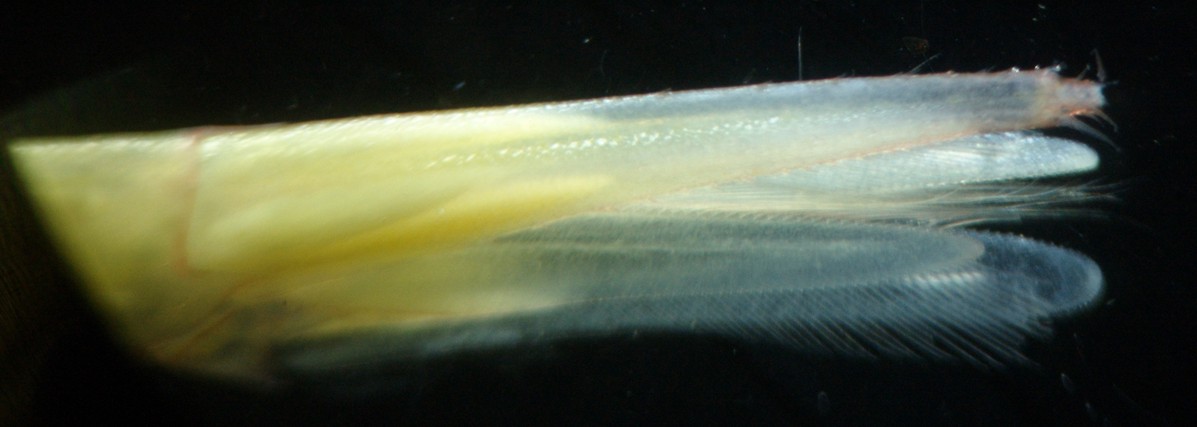
Dorsal
(slight angle) view of the uropods
and telson.
The spiny endpiece on the telson
has been slightly damaged but the long lateral spines at the base can
still
be seen. A few of the dorsolateral spines along the telson
can also be seen along the top margin.
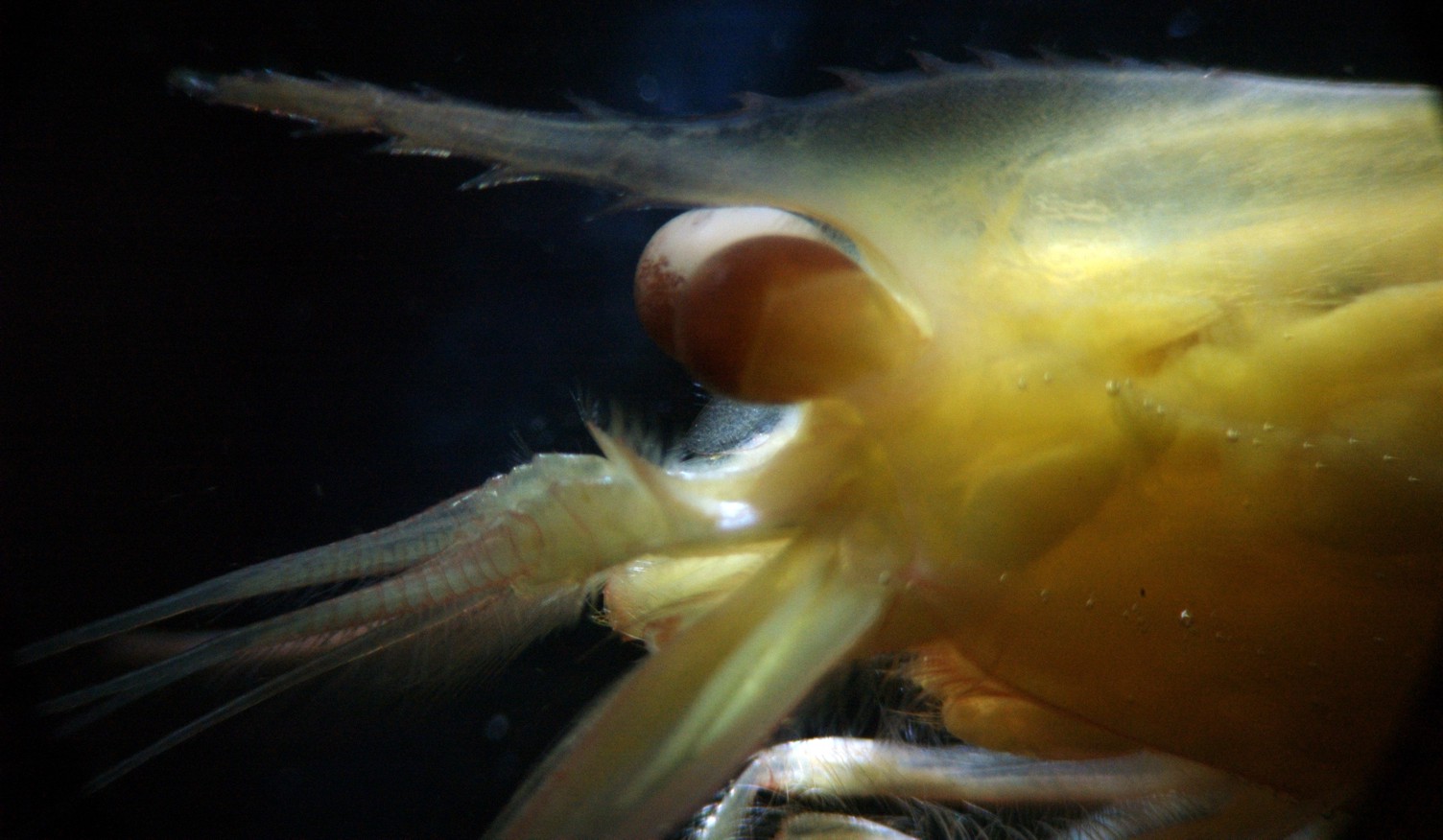
This side view of the head shows the long, toothed rostrum
which extends out to near the end of the antennal
scales (which are deflected downward out of view in this
photo)
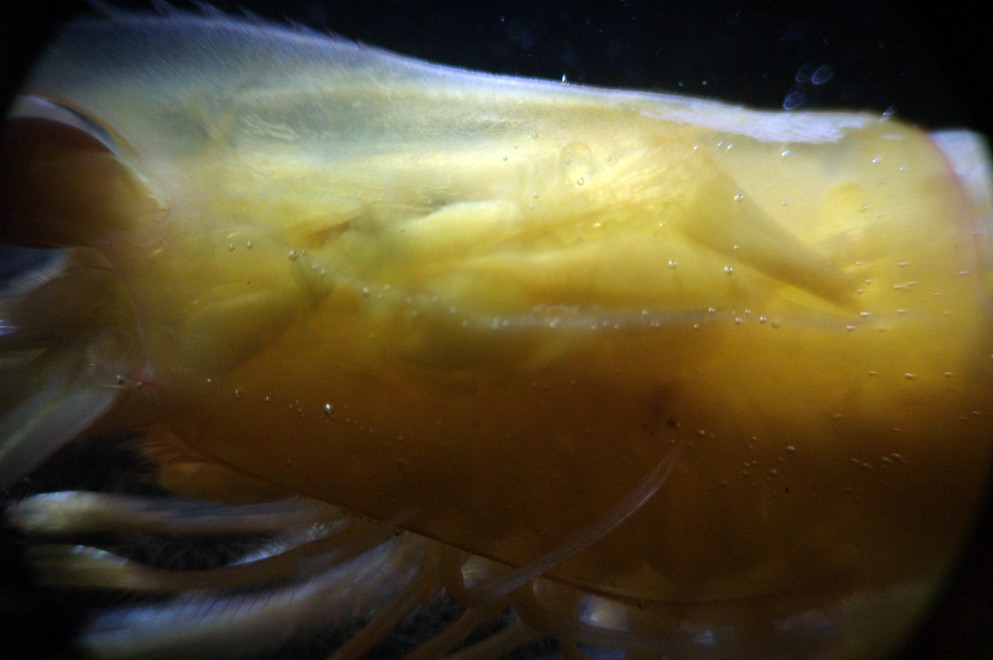
The three characteristic carinae
which run nearly to the posterior end of the carapace
can be seen in this side view. Dorsally there is a carina
which runs from the rostrum
(left) to near the posterior end of the carapace
on the right. A small, sinuous carina
runs from near the eye along the mid-side of the carapace.
In this photo a number of bubbles are adhered to it. A sharp carina
lines the ventral margin of the carapace.
In this preserved specimen the ventral carina
has retained much of its red color while the rest of the carapace
has faded to yellow.
Authors and Editors of Page:
Dave Cowles (2006): Created original page. Edited by Dave Cowles 2013